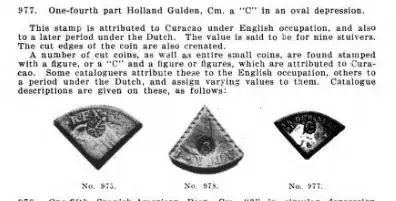Discussion at many online sites asserts that it was a common custom (e.g., in medieval or Roman times) to pay for a purchase with a coin and have the coin broken apart, with part of it returned as change. In particular, the most common sub-claim is that the Spanish "pieces of eight" refers to a coin designed to be broken into eight pieces (which seems like it might be a misunderstanding of its value equated to 8 reales).
Often times a photo of one or more broken coins is presented as evidence. However, I've never seen any of these claims backed up references, citations, academic papers, historical documents on the practice, etc. Examples:
- Numista: Thread on Medieval Cut Pennies
- Colonial Williamsburg: "Sometimes, though, a coin was cut into smaller pieces to be used as payment or change, as needed."
- CoinWeek: "The most widely circulated of these was the piece of eight, which, when supplies of smaller denomination coins dwindled were chopped or cut into smaller pieces to make change."
- Sea Research Society: Counter to the above, claims, "Despite stories to the contrary, pieces-of-eight were not routinely cut up by merchants to make change...", again with no citation.
So, was cutting up coins for change ever customary in the past? And/or were coins ever designed for that use-case? Are there academic/historical studies attesting to those facts?
